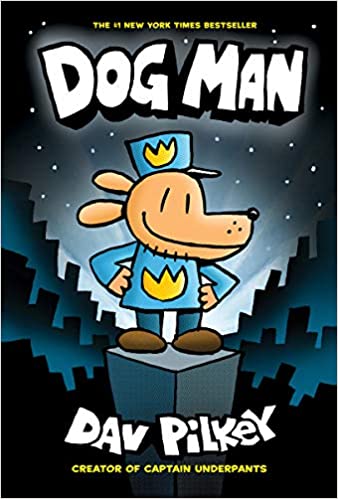by Bryan Patrick Avery
There are some books readers return to again and again. We re-read them until we have every word memorized, the cover falls off, and we begin to feel like the characters are part of our family. Why?
Most often, the answer is because we fall in love with the characters. So, how do we create a character readers will love? Here are three simple steps to get you started. We’ll use three popular characters as examples. We’ll use ROSCOE RILEY RULES #1 by Katherine Applegate, DOG MAN by Dav Pilkey, and THE BAD GUYS by Aaron Blabey.
There are some books readers return to again and again. We re-read them until we have every word memorized, the cover falls off, and we begin to feel like the characters are part of our family. Why?
Most often, the answer is because we fall in love with the characters. So, how do we create a character readers will love? Here are three simple steps to get you started. We’ll use three popular characters as examples. We’ll use ROSCOE RILEY RULES #1 by Katherine Applegate, DOG MAN by Dav Pilkey, and THE BAD GUYS by Aaron Blabey.
Step 1: Select a recognizable character.
This is typically (a) something your reader can either relate to (for example, a child close to their age or an animal that they recognize) or (b) something your reader can easily understand without a lot of backstory (think of the characters in many Dr. Suess books).
In the case of ROSCOE RILEY RULES, Roscoe is a first grader. Because the book is a chapter book, readers can easily relate to Roscoe.
In THE BAD GUYS, the main character is Mr. Wolf. Yes, that wolf. As in Big and Bad. He’s a character readers can easily understand.
Dog Man, the main character in DOG MAN is also something that readers can understand without much backstory. An early chapter covers the accident that explains how Dog Man came to be, but readers don’t need to know the ins and outs of medical transplants to get the idea. It’s a dog’s head on a man’s body. Dog Man. Simple.
Step 2: Give your reader an issue or flaw.
Not to be mistaken with a story problem. This is a flaw that is simply part of the character. It would exist regardless of the book the character is in.
Roscoe constantly finds himself in trouble.
Mr. Wolf is feared by everyone.
Dog Man is half man, half dog. Yikes!
These issues or flaws make a character more interesting and realistic. Perfect characters tend to be boring. Watching a character struggle against their flaw engages the reader and helps drive the story.
Step 3: Give your character something to do.
A relatable character with an interesting flaw won’t be much fun to read about if they just stand around. They have to have something to do.
Roscoe has to get ready for his class performance.
Mr. Wolf wants to become a hero.
Dog Man's life is in danger.
Once they have something do, your character’s flaw or flaws will start to play a role in the challenges they face.
That’s it. Follow these three steps and you can start creating characters you, and your readers, will love.
Well, that’s all for this month. Happy writing and have a magical month.
This is typically (a) something your reader can either relate to (for example, a child close to their age or an animal that they recognize) or (b) something your reader can easily understand without a lot of backstory (think of the characters in many Dr. Suess books).
In the case of ROSCOE RILEY RULES, Roscoe is a first grader. Because the book is a chapter book, readers can easily relate to Roscoe.
In THE BAD GUYS, the main character is Mr. Wolf. Yes, that wolf. As in Big and Bad. He’s a character readers can easily understand.
Dog Man, the main character in DOG MAN is also something that readers can understand without much backstory. An early chapter covers the accident that explains how Dog Man came to be, but readers don’t need to know the ins and outs of medical transplants to get the idea. It’s a dog’s head on a man’s body. Dog Man. Simple.
Step 2: Give your reader an issue or flaw.
Not to be mistaken with a story problem. This is a flaw that is simply part of the character. It would exist regardless of the book the character is in.
Roscoe constantly finds himself in trouble.
Mr. Wolf is feared by everyone.
Dog Man is half man, half dog. Yikes!
These issues or flaws make a character more interesting and realistic. Perfect characters tend to be boring. Watching a character struggle against their flaw engages the reader and helps drive the story.
Step 3: Give your character something to do.
A relatable character with an interesting flaw won’t be much fun to read about if they just stand around. They have to have something to do.
Roscoe has to get ready for his class performance.
Mr. Wolf wants to become a hero.
Dog Man's life is in danger.
Once they have something do, your character’s flaw or flaws will start to play a role in the challenges they face.
That’s it. Follow these three steps and you can start creating characters you, and your readers, will love.
Well, that’s all for this month. Happy writing and have a magical month.
Bryan Patrick Avery discovered a love of magic and mystery at the age of four, after receiving a magic set and his first Bobbsey Twins Mystery book. Today, he is an award-winning poet and author, and a member of the Society of Children’s Book Writers and Illustrators and the Mystery Writers of America. He's also a life member of the Society of American Magicians (which was once led by Harry Houdini) and charter member of the International Association of Black Magical Artists. Bryan's greatest joy is making stories appear out of thin air.










